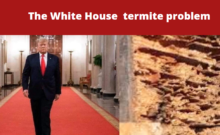 I am pleased to be recognized as a Data Privacy Day Champion, as is Prevendra. Every day efforts are expended to assist companies and individuals protect their collective privacy. In 2016 we witnessed millions of individuals having had their private information compromised. A healthy percentage of those compromised, found their information was being exploited and used.
I am pleased to be recognized as a Data Privacy Day Champion, as is Prevendra. Every day efforts are expended to assist companies and individuals protect their collective privacy. In 2016 we witnessed millions of individuals having had their private information compromised. A healthy percentage of those compromised, found their information was being exploited and used.
This year’s theme for Data Privacy Day 2017 is privacy aware (#PrivacyAware). The intent it to empower every individual and business to respect privacy, safeguard data and enable trust.
For the past seven years, I’ve been generating an annual missive on this topic. This year, we’ll share the official infographic and a few of our privacy tips which have been shared over the years and remain accurate today.
So what can we do? Here are the two steps that we can take to understand how your data (and privacy) is being used and at the same time not appreciably diminishing your online experience.
Privacy Tip #1
Privacy Statements
Read every site’s “Privacy” statements. Why? So you will know what information will be collected, how it will be used and with whom it will be “shared.” Every time you open a privacy statement – search for the word “SHARE” and understand how your information will be shared. Search for the word “USED” and understand how your information will be used. Search for the word “COLLECT” and understand what is being collected.
Here’s is the Prevendra privacy statement – Prevendra, Inc. Privacy statement.
[bctt tweet=”Read the privacy statement, before you share your data. #PrivacyAware ” username=”PrevendraInc”]
Privacy Tip #2
Privacy Settings
Set your privacy settings to your individual comfort level. Whether you are using Facebook, Twitter, LinkedIn or any other social network, they have controls on how and with whom your information is available with the application.
Take the time necessary to set those settings. Take a moment to read how the different setting affect who has access to what you are sharing. For example on Facebook you can share with a micro-group of your “friends” or with your public or somewhere in between.
On your devices, under privacy or security settings you can adjust how you share your location, what information is accessible to the application or what information on your device the application has access.
[bctt tweet=”Review your privacy settings at least once a month #PrivacyAware ” username=”PrevendraInc”]
In 2010, I admonished that each individual should take steps to protect their own privacy. No surprise, the the two pieces of advice above, were the same advice provided in 2010. An excerpt from my advice on Privacy Day 2010: “To accomplish this goal [privacy], it’s important to know how you are sharing your information, how others are sharing your information and, ultimately, how your information is being utilized. Some would say that it’s difficult to know in this digital age; others would say it has always been. It is difficult – but not insurmountable. With a bit of awareness and education it’s within our collective capacity to develop a better understanding so that we reduce the frequency with which we effectively shoot ourselves in the foot, both accidentally and seemingly on purpose.”
- Ask how your data will be used, under what circumstances, and by whom.
- For those who use peer-to-peer software in your home: Review the settings in detail, as an incorrect setting can open your system to an outside entity.
- Do you have a wireless network? Suppress the Service Set Identifier Data (SSID), limit access to specific MAC addresses, and use WPA2 encryption with strong passwords. A strong password consists of more than eight, preferably 14 characters consisting of symbols, numbers, and letters (which isn’t a word from a dictionary of any language). This will greatly reduce the likelihood of unauthorized access by criminals.
- Data destruction: Shred your paper copy data; degauss or destroy your magnetic media prior to recycling. Don’t allow a physical harvest of your data.
- Do others use your computer? If you allow visitors to use your computer or wireless network and you share the primary passwords, change them following each use.
- Encryption: I advocate encryption, with a robust strong key phrase for your important data. Data or full-disk encryption, the choice is yours.
A year later, 2011 and I continued to cajole all to think about privacy. I asked a question at an event in 2010: “How many of you check Twitter or your social networks before your feet hit the floor in the morning?”About one-quarter of the 300 people present raised their hand. Quite a telling answer, and one that solidified in my mind that checking in is right up there with reaching for your morning coffee.
I then discussed the influence of social networks on our everyday life. The unintended growth of personal data that each of us creates as we move through our daily lives. A professional colleague of mine coined this “our digital exhaust.” We should continue to review our exhaust. Review how many different online profiles you’ve created. Consider how many photos, videos, emails, comments, and tweets you’ve posted in public or quasi-public locales. These are the nuclei of your biographic mass, which can and will be compiled about you by any number of interested entities, whether they are marketers or hiring managers. I assure you, this information will not match your well-framed and articulated persona or the resume that you so painstakingly created. The good news is that if you know what others know, then you are prepared for the question that may arise about a given incident or piece of publicly available data.
In 2013, I declared the prior year of 2012, as the year our “privacy was collectively hosed”. We saw the influx in medical privacy breaches, the overstepping of the US government entities in requesting data from corporate entities was at an all time high. I shouted, how every consumer should measure their sharing of their information with two phrases: “need to know“ or “do not track.” We all must pay attention to the minutia and details.
Again, here we are, 2017 and we are facing many of the same issues. I implore each of you. Protect your own data. For those who collect data, do not collect what you can not protect. It is your privacy, you are the one to ultimately decide what you will share and what you will hold dear. I urge you to know what you share.
Thank you for your time.
Christopher Burgess
CEO Prevendra.



